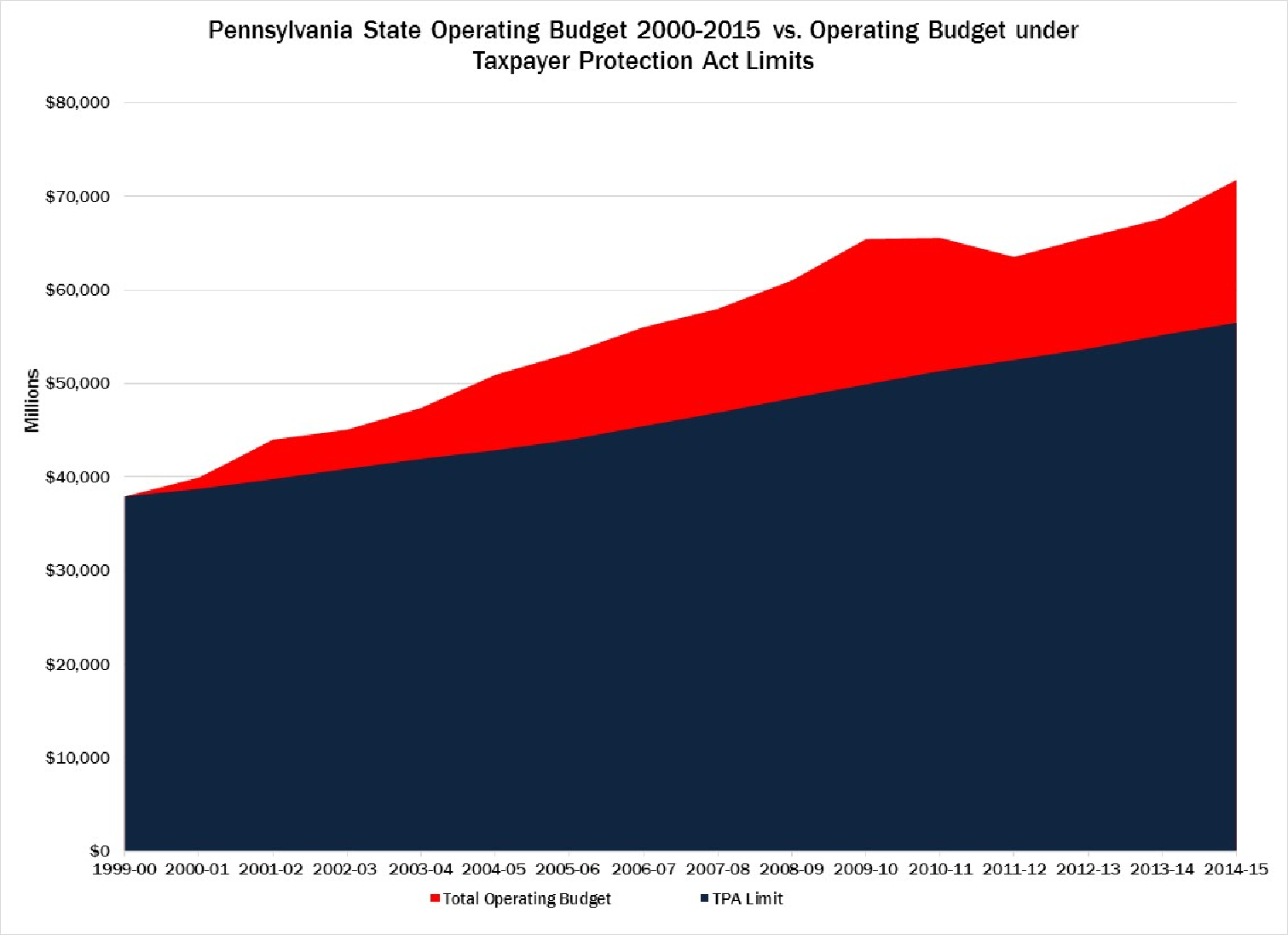Unrestrained Growth in Government Spending is Burdening Taxpayers
- Total Pennsylvania state government spending has consistently outpaced the growth of personal income.
- From 1970 to 2014, the state operating budget grew as a percentage of Pennsylvanians’ personal income from 8.8% to 11.4%.
- Total state spending will have increased by approximately $13,800 per family of four (adjusted for inflation) from 1970 through 2015.
- Given the burden of government spending, state and local taxes now cost Pennsylvanians $4,374 per person, equaling 10.3% of resident’s total income. Pennsylvania currently has the 10th highest state and local tax burden in the nation, up from 25th in 1991.
Government Growth has Hampered Pennsylvania’s Economy
- Despite the dramatic growth in state government spending, Pennsylvania ranks among the worst states in key economic performance indicators.
- From 1970-2013, Pennsylvania ranked 49th in job growth, 48th in population growth, and 45th in personal income growth.
- As Pennsylvania rapidly increased spending from 2000 to 2010, Pennsylvania’s private sector lost 103,700 jobs, while government employment grew by 33,400.
- Between 2010 and 2014—a period when General Fund spending grew less than inflation and population—Pennsylvania added 133,500 private sector jobs.
- According to IRS data, Pennsylvania lost a net 86,205 taxpayers to other states from 2000 to 2011.
- This out-migration resulted in a net loss of more than $4.7 billion in household income.
The Solution: The Taxpayer Protection Act (TPA)
The Taxpayer Protection Act would pave the way for the following reforms:
Limit future growth in state and local government spending.
- Government spending increases would be limited to the rate of inflation plus population growth.
Prioritization of spending.
- Spending restraints would allow lawmakers to determine how to best allocate taxpayer dollars.
Ensure a prudent Rainy Day Fund.
- 25% of taxes collected above estimated spending levels would be placed into a Rainy Day Fund that could be used to balance the budget during years when revenue growth does not meet projections.
Provide tax relief for families.
- 25% of all excess state tax revenues would be used to reduce Personal Income Tax rates.
The TPA Allows for Reasonable Increases in Government Services
- A spending limit only slows the growth in spending; it does not mandate any cuts.
- Increases should be tied to an increase in prices (inflation) and the number of people served (population growth).
- The TPA is not a hard cap, allowing lawmakers to exceed the limit with a supermajority vote.
The Taxpayer Protection Act Prepares Pennsylvania for Recessions
- Prior to 2011-12, Pennsylvania’s total operating budget had increased for more than 40 consecutive years.
- The TPA would require responsible budgets with sustainable levels of growth in both good economic times and bad, avoiding budgets that have resulted in the deficits of recent years.
- The TPA would require lawmakers to set money aside in a Rainy Day Fund to prepare for declines in revenue.
Spending Limits Should Encompass all Government Spending
- State budget discussions tend to focus only on the General Fund, which represents less than half of all state spending. Pennsylvania’s total state operating budget is projected to be nearly $71.8 billion.
- Since 1970, General Fund spending has grown nearly 90% in inflation-adjusted dollars. In contrast, spending from “Other State Funds” ballooned by an estimated 677%.
- Total state spending increased by $33.8 billion since 2000.Under the TPA index, however, total state spending could have increased by $17.8 billion, which would have saved each family of four an additional $4,476 this year.

RELATED : TAXES & SPENDING, SPENDING LIMITS, TAX REFORM

